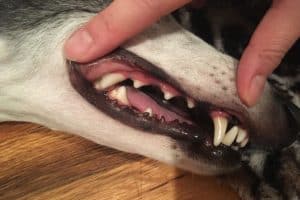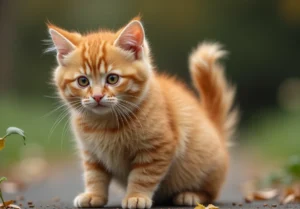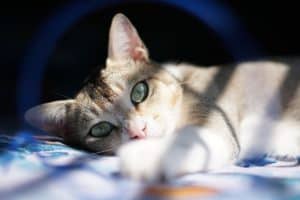Cats are known for their agility and grace, but did you know they have a unique dental phenomenon? Instead of losing teeth like many other animals, cats can actually reabsorb them. This fascinating process has piqued the curiosity of cat owners and veterinarians alike.
Cats reabsorb teeth primarily as a natural biological response, often related to dental health issues such as tooth resorption syndrome. This process allows their bodies to safely remove damaged or decaying teeth without the complications of extraction.
What is tooth resorption in cats
Tooth resorption in cats is a painful dental condition where a cat’s body gradually breaks down and absorbs its own tooth structure. This process can affect any tooth, but it most commonly targets the premolars and molars.
What’s significant about tooth resorption is that it often remains unnoticed until it has progressed substantially. Unlike cavities, which are typically caused by bacteria, tooth resorption is linked more to the cat’s own biological processes. The condition can lead to severe pain, inflammation, and even complications like tooth loss. Maintaining regular dental check-ups is crucial for early detection and management. If you notice your furry friend chewing oddly or having difficulty eating, it’s worth a visit to the vet.
Why do cats experience tooth resorption
Genetics play a notable role in tooth resorption. Certain breeds, like Siamese and Abyssinian cats, are more predisposed to this condition, often indicating a hereditary factor.
Moreover, diet can contribute significantly. Cats that consume a diet lacking in essential nutrients may be at a higher risk. It’s not just about feeding them cat food; the quality and type of food can impact their overall dental health. Underlining health issues such as periodontal disease, chronic inflammation, or hormonal imbalances can also trigger tooth resorption.
Here are some factors to keep in mind:
– Genetics: Some breeds are more prone to tooth resorption.
– Dietary deficiencies: A lack of vital nutrients can harm dental health.
– Underlying health conditions: Issues like periodontal disease can contribute to tooth loss.
– Age: Older cats are more susceptible to dental issues, making regular dental checks essential.
For those concerned about their cat’s dental health, the American Veterinary Medical Association (AVMA) offers detailed resources on feline dental care. Regular vet visits and attention to your cat’s dental habits can make a real difference.
How common is tooth resorption in cats
Tooth resorption is surprisingly prevalent among our feline friends, affecting around 20-75% of cats at some point in their lives. It seems that the older a cat gets, the higher the likelihood of developing this dental issue. Research indicates that it’s particularly common in older cats, often developing silently without noticeable symptoms until more severe cases arise.
Interestingly, this condition occurs more frequently in indoor cats compared to outdoor ones. Factors like genetics, diet, and even dental care habits contribute to the risk. All this makes it crucial for cat owners to be aware of their pet’s dental health regularly. Regular veterinary check-ups can help detect resorption early, which is key for managing the condition effectively.
What are the signs of tooth resorption
Recognizing the signs of tooth resorption can be challenging since early symptoms might not be very obvious. However, if you’re attentive, you might catch some telltale signs. Here’s what to look out for:
Changes in Eating Habits : Watch for a sudden reluctance to eat or favoring certain sides while chewing. This could indicate pain associated with their teeth.
Bad Breath : Unpleasant odors coming from your cat’s mouth may signal dental issues, including resorption.
Drooling : Excessive salivation or drooling can be a sign that your cat is experiencing pain in the mouth.
Behavioral Changes : Increased irritability or withdrawal from socializing could also point to discomfort.
Visible Teeth Changes : Gums might appear inflamed, or you might see irregularities in the teeth, such as the enamel breaking down.
If you observe any of these signs, it’s wise to schedule a visit to the vet sooner rather than later. Dental exams can reveal resorption even when it’s not obvious from the outside.
For more detailed information about cat dental health, check out resources from the American Veterinary Dental College here.
How is tooth resorption diagnosed
Tooth resorption in cats can be a tricky issue to diagnose, often needing a keen eye and professional expertise. Veterinarians commonly begin with a thorough oral examination, looking for telltale signs like gum inflammation, red lesions, or missing teeth. They’ll often take dental X-rays to get a clear picture beneath the surface, as tooth resorption can happen below the gum line where it’s not visible.
Another diagnostic technique involves checking for pain responses—like flinching or avoiding food when biting down. Given the complex nature of this condition, vets might also recommend advanced imaging if initial assessments are inconclusive. Cat owners often report behavioral changes, like altered eating habits or irritability, which can give additional clues to the vet. Keeping an eye on your cat’s dental health is essential, as early detection can make a world of difference.
What treatment options are available
Addressing tooth resorption in cats can vary greatly depending on the severity of the condition. In early stages, management is often the chosen path. This may include regular dental cleanings and using special dental treats designed to minimize plaque buildup.
However, in more severe cases, a vet may recommend surgical interventions. Tooth extraction is common when the resorption is extensive, especially if the tooth is causing significant pain. The vet may also opt for restorative dental treatments in some cases, but this largely depends on the specific situation.
Here’s a quick list of typical treatment options: – Management: Regular vet check-ups, oral hygiene practices, and dental diets. – Surgical Extraction: Removal of affected teeth to alleviate pain. – Restorative Treatments: Attempting to save teeth if possible, though not always feasible.
Monitoring your cat for changes in eating behavior or signs of discomfort can help in identifying issues early, ultimately guiding you and your vet in choosing the best treatment path. For more detailed insights into dental health in cats, consider checking out resources from the American Veterinary Medical Association here.
Can tooth resorption be prevented
Preventing tooth resorption in cats is a top priority for many pet owners. It’s crucial to maintain good dental hygiene from an early age. Here are practical steps that can help minimize the risk:
- Regular Vet Visits: Schedule annual dental check-ups with your vet. They can catch issues early.
- Dental Cleanings: Professional cleanings remove plaque and tartar, reducing the chance of resorption.
- At-Home Care: Brush your cat’s teeth regularly using toothpaste designed for felines. Daily brushing is ideal, but a few times a week can still be beneficial.
- Diet Matters: Choose high-quality food with dental health benefits. Some kibble is specifically formulated to help reduce plaque buildup.
- Toys and Chews: Provide dental treats or toys that promote chewing and help clean teeth naturally.
It’s not just about brushing and vet visits; being attentive to your cat’s habits can make a real difference. If you notice changes in their eating or signs of discomfort, reach out to your veterinarian. Early action could save a tooth!
Age plays a significant role in tooth resorption among cats. As they age, their teeth and gums naturally face more wear and tear, increasing susceptibility to dental issues. Factors influencing this relationship include:
- Dentin Formation: Older cats develop more dentin, the layer beneath enamel. Over time, this can lead to greater tooth sensitivity and resorption.
- Immune Response: Aging affects the immune system’s ability to combat inflammation. Cats with compromised immunity might see an uptick in dental problems.
- Underlying Health Conditions: Older cats are often more prone to systemic illnesses that can impact dental health, like kidney disease or dental-related infections.
Keeping a close watch on your senior cat’s teeth can help manage these risks. If you’re concerned about your cat’s dental health as they age, it may be beneficial to ask your vet about more frequent dental assessments.
As cats age, it’s wise to stay proactive. Monitoring their eating habits and ensuring that their dental care is aligned with their age can lead to better outcomes. Detailed info is available in resources like the American Veterinary Medical Association.
Trivia about cats and their teeth
Cats often shrug off toothaches due to their instincts, which makes dental health a crucial yet often overlooked aspect of their care. A fascinating fact is that kittens are born without teeth; they start developing them around three weeks old. By six months, they have their full set of 26 baby teeth, which are eventually replaced by 30 permanent adult teeth.
Another intriguing tidbit: cats don’t actually chew their food like humans do. Instead, they use a slicing motion with their sharp teeth to tear meat. This unique dental structure is designed for their carnivorous diet. Furthermore, dental issues are quite prevalent; it’s estimated that about 70% of cats have dental disease by the age of three. Regular check-ups and at-home dental care can help you keep your feline friend’s smile in tip-top shape. Don’t overlook the importance of brushing their teeth to tackle plaque buildup and prevent periodontal disease—much like we do for ourselves!
Unique myths surrounding cat teeth
There are plenty of myths swirling around about cat teeth and their care, and it’s time to clear the air. One common misconception is that cats don’t need dental cleanings because they are natural hunters. In reality, even the best feline hunters can suffer from dental issues, which can lead to serious health problems if left untreated.
Another prevalent myth is that a cat’s breath is naturally stinky. While it’s true some odors are typical, persistent bad breath can indicate dental disease or other health concerns. Don’t just brush it off—get it checked out.
Some folks believe that all cats’ teeth will eventually fall out as they age, but that’s not the norm. While older cats might experience some dental loss, it’s not an inevitability. Maintaining regular veterinary dental care and proper at-home hygiene can ensure your cat keeps their precious pearly whites for as long as possible.
Here are a few more myths that need debunking:
– Teeth grinding is harmless. This can be a sign of stress or dental issues.
– Dry food alone prevents plaque. While it helps, some dental treats and water additives can enhance oral health.
– Cat toys don’t affect dental health. Chew toys can actually help reduce tartar and stimulate gums.
For accurate info on your cat’s dental care, check out resources like the American Veterinary Dental College.
Alex, a passionate animal lover, has experience in training and understanding animal behavior. As a proud pet parent to two dogs and three cats, he founded AnimalReport.net to share insights from animal experts and expand his knowledge of the animal kingdom.




